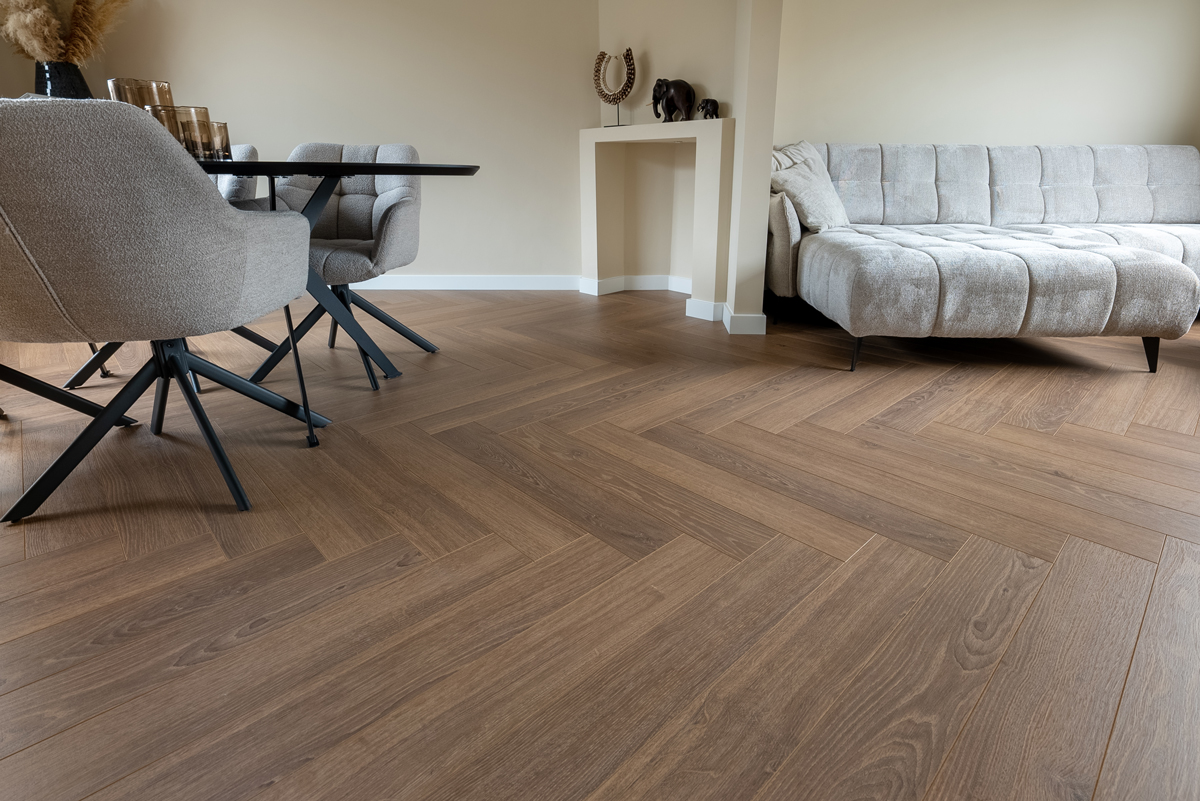The Battle of the Fishes! In this blog, we compare two underwater laminate floors that are diametrically opposed: the Herringbone Laminate and its bigger brother, the Whalebone Laminate. Read on to discover the main differences between these two floors, so you can make an informed decision about which one best suits your needs.
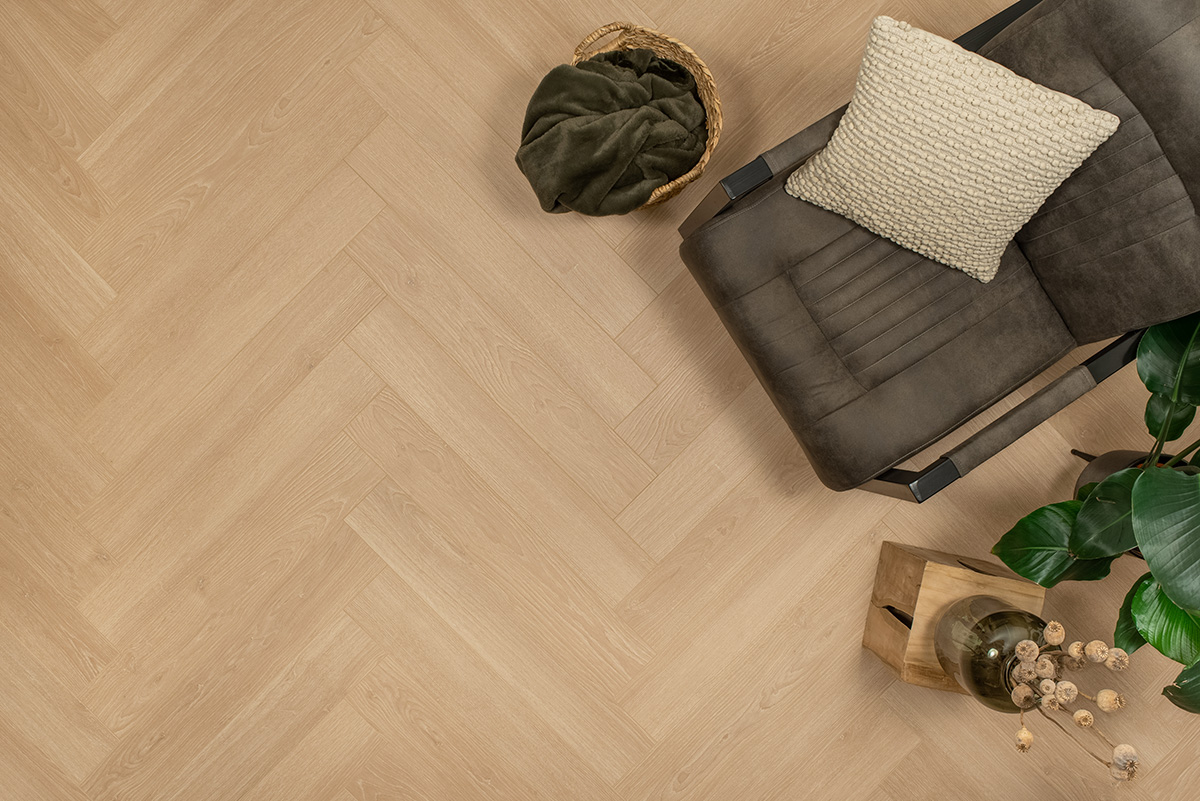
What’s Whalebone?
Most people who know Floer are already familiar with our most popular category: Whalebone Vinyl. For a long time, laminate fans had to wait for an answer for a similar floor, but it’s finally here. In fact, we added the Whalebone Laminate collection to our range a while ago. But, what exactly is whalebone? To make it simple, let’s go back to high school biology. You have normal-sized fish, and you have whales that are much bigger. A whalebone floor has planks that are larger than a standard herringbone floor, which is why we sometimes call it XL herringbone. Now, the difference between the two floors is not as huge as that between the real fish, but it is still significant enough to dedicate a blog post to it.
The difference between Whalebone & Herringbone Laminate
The most obvious difference between the two floors is its size, but there are several more. We have listed all the differences below to read about. Additionally, on our website, you can find numerous other blogs where we discuss differences between all kinds of different floors. For example, you can read about the difference between whalebone and herringbone vinyl.
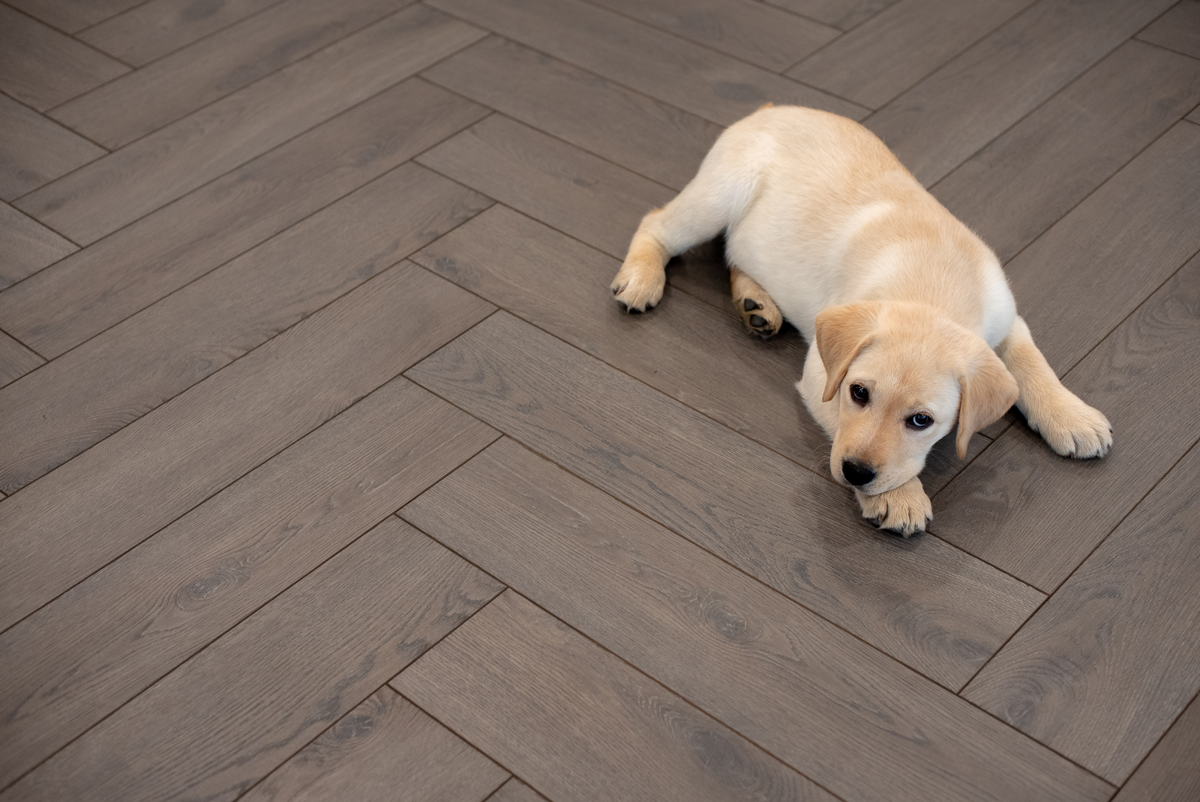
1. Size of the plank
As mentioned earlier, the main difference between the two floors is the size of the planks. The standard Herringbone Laminate planks have a length of 64 cm, a width of 14.3 cm, and a thickness of 1.2 cm. The bigger Whalebone Laminate, on the other hand, has a length of 85.8 cm, a width of 14.3 cm, and a thickness of 8 mm. As you can see, the Whalebone Laminate has much longer planks, which immediately give the floor a completely different look once it is laid. The larger size of the XL herringbone also means that there are fewer herringbone points in the floor area. You can read more about this in point 4.
The size of the floorboards affects the laying of the floor. Herringbone Laminate floors are larger, so you end up needing to lay fewer planks compared to a standard Herringbone Laminate floor. If you want to learn how to lay a Herringbone Laminate floor, read the Floer blog “How to lay a Herringbone Laminate floor?” and watch the accompanying FloerTube video. The blog and video provide step-by-step instructions for laying this floor yourself.
2. Water-resistance
Looking for a herringbone laminate floor with high water resistance? Look no further than the new Herringbone Laminate collection! Featuring a “waterproof” label, these floors can withstand water for up to 4 hours without any damage. This means that even if a puddle of water is left on the floor, it won’t be a problem. The floors are even waterproof right down to the groove. So, if someone knocks over a cup of water, there’s no need to worry. Just be sure to clean up any spills promptly to prevent any damage from occurring.
The grooves of these waterproof laminate floors have a water-resistant coating. Standard laminate floors only have a water-resistant coating on the top, but floors labeled as ‘waterproof’ have a special coating in the grooves as well. For more information on water-resistant laminate, read the Floer blog, where you’ll find all the collections that carry this label.
3. Usage class
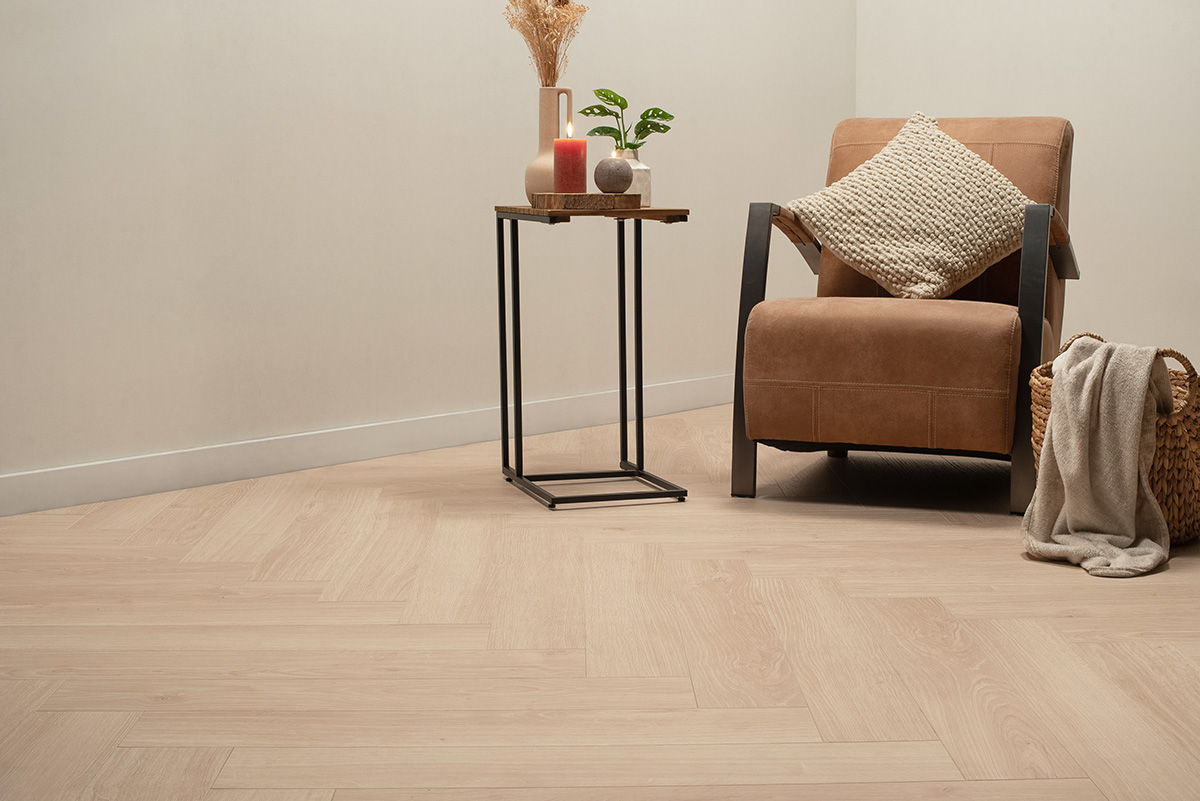
The two herringbone pattern floors have different usage classes that indicate their maximum usage intensity. The XL herringbone floors from the Whalebone collection have an AC4 usage class, which allows for intensive domestic and normal commercial use. Additionally, they come with a lifetime (!) manufacturer’s warranty, allowing you to enjoy this extra-large herringbone floor for as long as you want. However, remember to comply with the laying conditions to remain eligible for the manufacturer’s warranty.
In contrast, Herringbone Laminate boasts an AC6 usage class, making it suitable for intensive use in both domestic and commercial applications. Coupled with a manufacturer’s warranty of at least 35 years, this floor can be enjoyed for an endless period of time. It’s no wonder we included herringbone laminate in our top 5 floors for the canteen!
4. Number of herringbone points in floor area
One of the reasons why people often choose Whalebone Laminate flooring is the difference in the number of herringbone points on the surface. While the pattern of herringbone floors has made them one of the most popular flooring options for years, some prefer the quieter pattern of whalebone. Herringbone fans, on the other hand, prefer as many herringbone points as possible. In an XL herringbone floor, the floorboards are larger, resulting in fewer herringbone points per floor area. This reduction gives the floor a calmer look, as covered in the first point.
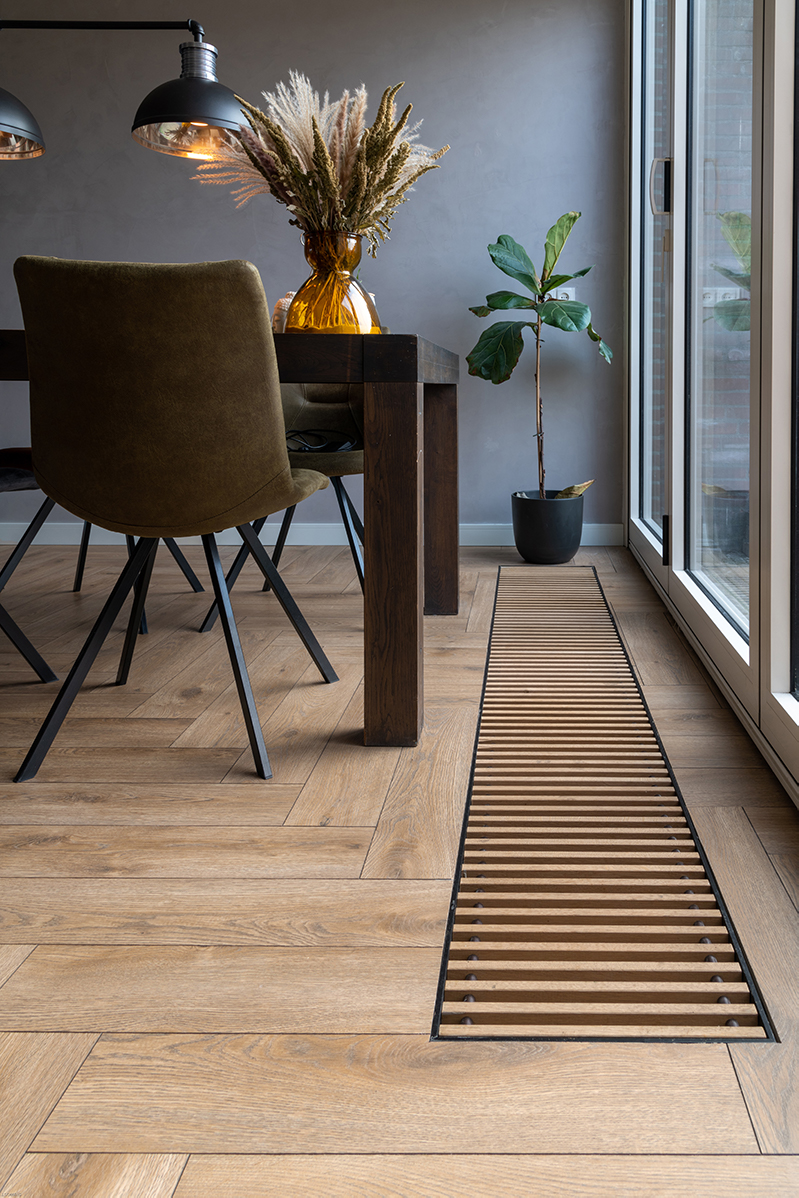
5. Left and right floorboards
Here is the final difference between Whalebone and Herringbone Laminate: A standard Herringbone Laminate floor comes with left and right parts in one pack, while Whalebone Laminate flooring consists of equal parts. Therefore, when starting at a starter point or laying the floor, it doesn’t matter which planks you put next to each other because they always fit. This is a significant advantage as you are never stuck with one particular type of floorboard at the end. With a standard Herringbone Laminate floor, you might end up with too many left or right boards. However, with a Herringbone Laminate floor made of equal parts, you can always use all planks, resulting in less cutting loss when laying the floor.
Do you want to learn how to lay a Whalebone Laminate floor? Check out the Floer blog “How to lay a Whalebone Laminate” and watch the accompanying FloerTube video. This guide explains, step-by-step, how you can easily install this floor yourself!


